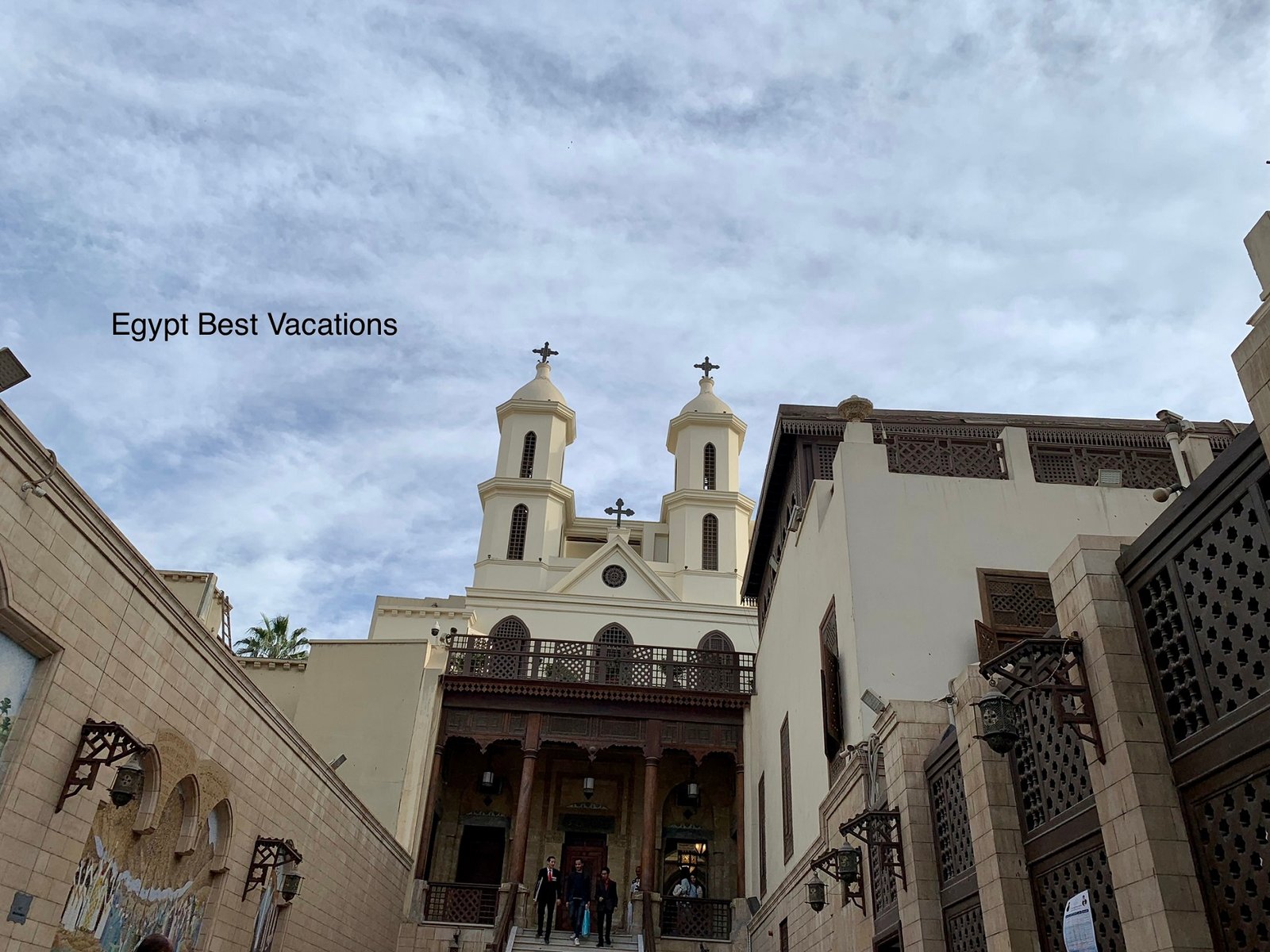Cairo’s Church of the Saint Virgin Mary was built on the ruins of the Roman Babylon Fortress. Because of its location over the ruins of the fortress, it is known as Al Mo’llaqah Chruch or the “Hanging Chruch.” It is known during the Middle Ages as the ‘Church of the Staircase’ because of the staircase that leads to the church’s gate. While sometimes it is known as the ‘Church of the Pillar’. This name refers to pillar on which the Virgin Mary appeared to Patriarch Abraham Bin Zara’.
Miracle of Al-Moqattam Mountain Movement
The Miracle of Al-Moqattam Mountain Movement is a revered story in Coptic Christian tradition, deeply connected to the history of Egypt’s Christian community. According to the narrative, the event took place during the reign of the Fatimid Caliph Al-Mu’izz (10th century AD). A Jewish person, in a discussion with Saint Abraham Bin Zara, challenged the Christians to prove the truth of their faith, citing the Biblical verse, “If you have faith as small as a mustard seed, you can say to this mountain, ‘Move from here to there,’ and it will move” (Matthew 17:20).
Saint Abraham Bin Zara fasted for three days at the Hanging Church, praying for guidance. On the third day, the Virgin Mary appeared on a pillar within the church and instructed him to go to the market and search for a one-eyed man—Saint Simon the Tanner. She revealed that through his unwavering faith, Saint Simon would be able to move the mountain. Following her instructions, Saint Simon’s prayers and faith miraculously caused the Moqattam Mountain to shift to its present-day location.
The Miracle of Al-Moqattam Mountain is celebrated as a symbol of unwavering faith and divine power. It remains a source of inspiration for many Copts, who commemorate this event with annual prayers and gatherings. The story is also tied to the ancient churches and monasteries in the Moqattam area, such as the Saint Simon Monastery, a pilgrimage site for both locals and tourists.
Location of the Hanging Church
The Hanging Church is located just before the Metro Station of “Mary Girgis”. It is nearby the famous Coptic Museum and the Abu Serga Church. To reach the Hanging Church in Old Cairo from central Cairo, follow these steps:
By Metro:
- Take the Cairo Metro Line 1 (the red line) and head towards the Mar Girgis Station.
- The Hanging Church is just a short walk from the station exit, located within the Coptic Cairo area.
By Taxi or Ride-Hailing Apps:
- Use a taxi or ride-hailing apps like Uber or Careem, and set your destination as Hanging Church or Coptic Cairo.
- The church is located in the Misr Al-Qadima (Old Cairo) district, and most drivers are familiar with the area.
By Bus:
- Take any bus heading to Old Cairo or Mar Girgis Square.
- From the bus stop, it’s a short walk to the church.
Guided Tours:
Egypt Best Vacations offers many daily guided tours that include Coptic Cairo with the Hanging Church and other churches included. These tours include transportation, entrance fees and expert tour guides.
History of the Hanging Church

From the time of “Abraham Bin Zara’a” in 969 until 1300 AD, the Hanging Church served as the Patriarch’s seat and residence which was in Alexandria. Between the 11th and 14th centuries AD, the church played a very important role in the life of Egyptian churches, when it was the location for the election of the new Patriarch, and it was also the location for their burial.
Throughout its history, the Hanging Church has been subjected to robberies and damage, so it has undergone some restoration, erasing much of the evidence of the church’s origin. The most extensive restoration took place in the nineteenth century AD. The church’s extreme left side was rebuilt. There is now a new open court. The nave was expanded to include four isles. The colonnade leading to the smaller church was demolished. It was converted into a side church that bears the name of the Ethiopian Patriarch “Takla Henmout” who lived in the 13th century Ad. As well as the 1992 earthquake did a lot of damage.
Basilica Design of the Hanging Church
Christianity is the second-largest religion in Egypt. The church was designed after the basilica model, with a nave, niche, and side isles leading to side rooms. Hanging Church is dedicated to the Virgin Mary and contains sanctuaries to her and Saints John the Baptist and George. A smaller church was built to the south of the Hanging Church, which was linked by a colonnade. In 1100 AD, another floor was added to the small church to serve as the patriarch’s seat.
The marble pulpit, the wooden niche, and the 110 church icons depicting important Christian events are among the valuable items in the Hanging Church. The oldest of them dates back to the 8th century, but most of them date to the 18th century. The very famous icon is known as the Egyptian Monalisa. Some other objects from the Hanging Church went to the nearby Coptic Museum.

